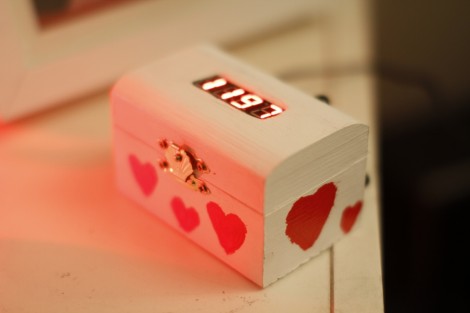
It’s not roses or jewelry, but we hope [Erik]’s light-up USB heart will be appreciated by his significant other. When the two heart pieces come in contact with each other, each side lights up.
[Erik] started his build by cutting two half-heart shaped pieces out of polycarbonate. After drilling a few holes for LEDs and wires, magnets and reed switches were installed along the ‘broken’ side of the heart. Whenever the hearts come in contact with each other, the magnets trip the reed switches and light up both sides of the heart.
There is USB flash drive embedded in each heart half is loaded with a portable Dropbox. When the USB drive is plugged into a computer, the dropbox steps into action and synchronizes the photo album stored in each heart half. No matter how far apart they are, [Erik] and his SO can share pictures through their glowing LED hearts. Not to come off as a hopeless romantic, but this sounds like something we’d like for Valentine’s day. We’re hoping [Erik]’s SO thinks that as well.














